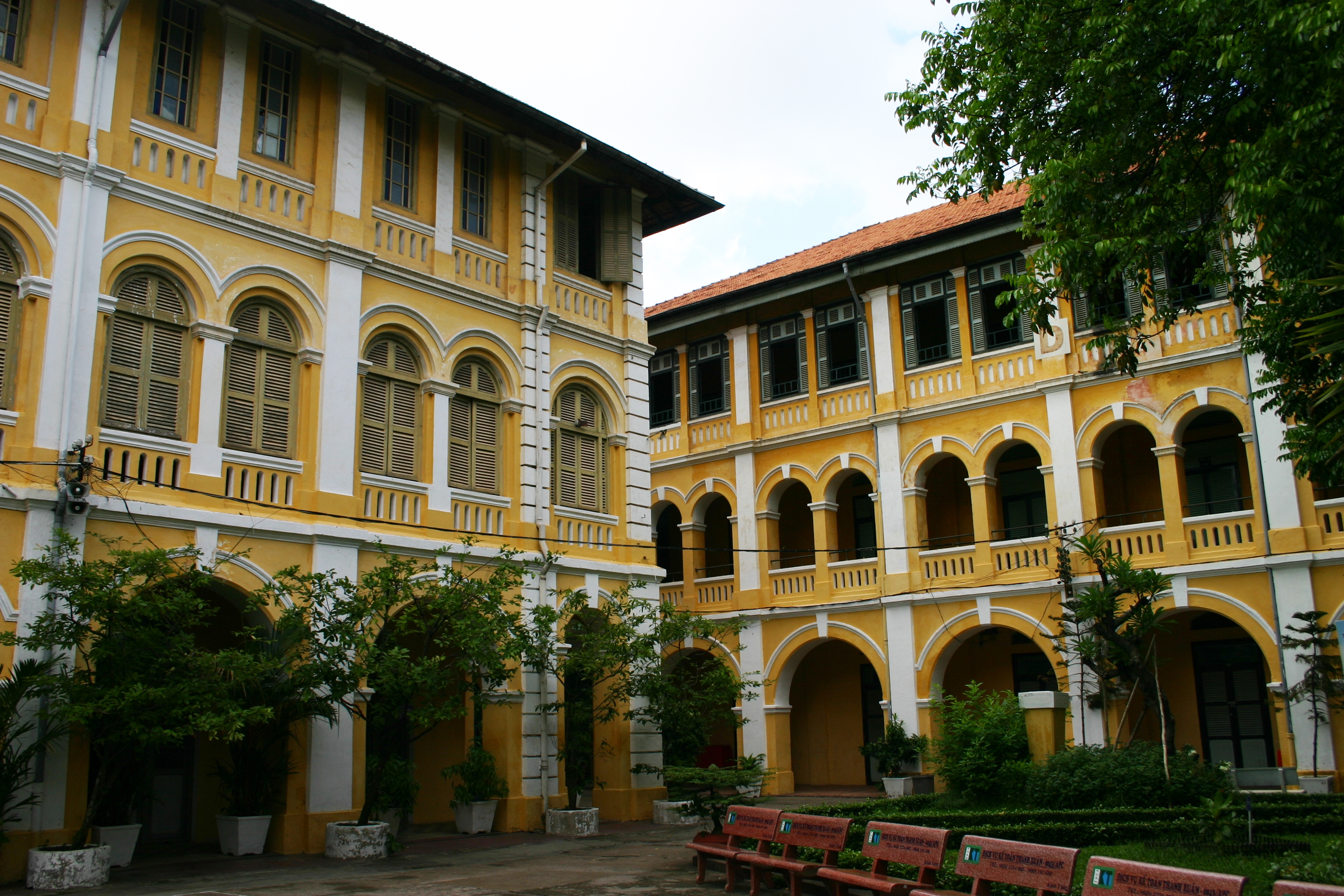
The Trần Đại Nghĩa Specialist High School at 53 Nguyễn Du
This article was published previously in Saigoneer http://saigoneer.com
With its prime location in one of Hồ Chí Minh City’s numerous “đất vàng” (gold land) areas, many wonder how long the former Institution Tabert, now the Trần Đại Nghĩa Specialist High School at 53 Nguyễn Du, can withstand the pressures for redevelopment. This week we take a look at the history of this old school compound, originally the site of the first French governor’s palace.
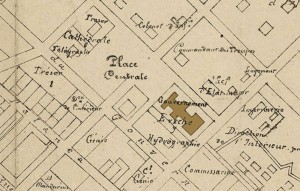
The first governor’s palace as depicted on a map of 1870
It was surely no accident that, soon after the conquest of Saigon, the French chose the top end of what later became rue Catinat (Đồng Khởi street) as their centre of government. This ancient thoroughfare had once linked the quayside with the main southern gate of King Gia Long’s great 1790 Gia Định Citadel, and the area framed by modern Đồng Khởi, Lê Duẩn, Hai Bà Trưng and Nguyễn Huệ streets had been the location of the Hoàng Cung or royal palace, home to the king when he visited the city.
Symbolically situated on part of the former royal palace compound, the first Hôtel du gouverneur – one of several key colonial government offices initially located in this area – was a collection of wooden buildings imported in kit form from Singapore and assembled on site in 1861-1862 for Admiral-Governor Louis Adolphe Bonard (28 November 1861-23 April 1863).
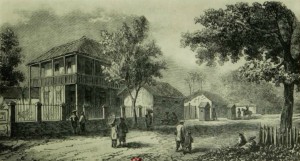
A drawing of the first governor’s palace from the 1931 book Iconographie historique de l’Indochine française (1931)
It comprised a residence, an office, a 600-seat salle de spectacles (events hall), a stables and a small farm for rearing chickens and pigs. Drawings of the building were published in the 1931 book Iconographie historique de l’Indochine française (1931) by Paul Boudet and André Masson.
The salle de spectacles of this first governor’s palace was used for a variety of functions, including the staging of performances by visiting theatre and music companies before the opening of the first Théâtre de Saïgon in 1872.
After the demolition in the early 1870s of the first wooden cathedral – the Église Sainte-Marie-Immaculée, which stood on the site of the modern Sun Wah Tower until it became infested by termites – the salle de spectacles was also pressed into service every Sunday as a makeshift church.

Father Henri de Kerlan (1844-1877), founder of the Institution Taberd
In 1873, following the inauguration of the Norodom Palace, the governor and his staff vacated the old wooden palace buildings and placed them in the charge of the Société des Missions Étrangères de Paris (MEP). “Dedicating his care and much of his personal fortune to this work,” an MEP priest named Father Henri de Kerlan (1844-1877) then transformed the complex into the Institution Taberd, a school for abandoned mixed-race children.
Opened on 31 August 1874, the school was named, like the street on which it stood, in honour of Jean-Louis Taberd, an MEP missionary who had served as Vicar Apostolic of Cochinchina and Bishop of Isauropolis from 1830 to 1840. Right down to 1880, when the Notre Dame Cathedral was finally inaugurated, the former salle de spectacles continued to function at weekends as a temporary Cathedral.
In 1879, the colonial government withdrew its subsidy to the nearby Collège d’Adran, which had been managed since 1866 by the La Salle Christian Brothers (Frères des écoles chrétiennes). Without student scholarships, the Brothers were obliged to shut shop and leave Cochinchina. The parents of former Collège d’Adran students – both French and Vietnamese – sent them instead to the Institution Taberd, and throughout the 1880s its staff were increasingly overwhelmed by the influx.
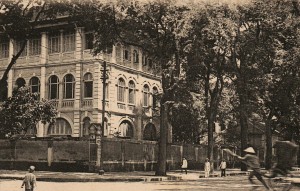
An exterior view of the Institution Taberd during the colonial era
This situation was resolved by one of Kerlan’s successors, Father Lucien Mossard (1887-1890), who persuaded Bishop Isidore Colombert to bring back the La Salle Christian Brothers to take over the running of the school. By 1890, the old wooden palace buildings had been demolished and replaced by the current building, a large three-storey structure constructed around a spacious courtyard.
By 1894 the school had 344 students, including 306 boarders, and in that same year an annex was opened in Cap St-Jacques (Vũng Tàu).
Like many other city schools, the Institution Taberd – more commonly known in the 20th century as the École Taberd – was relocated to temporary accommodation during the Japanese occupation and subsequent Allied bombing of Saigon in the years 1940-1945.
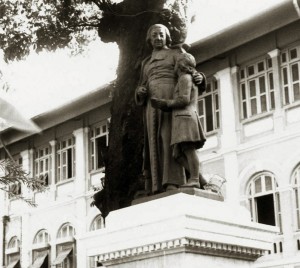
Before 1975 a statue of John Baptiste de La Salle (1651-1719), founder of the La Salle Christian Brothers, stood in the courtyard of the Institution Taberd
After the Geneva Accords of 1954, the École Taberd building briefly became a place of shelter for nearly 1,200 migrant families before resuming operations as a school.
In 1975, all of the La Salle schools in Việt Nam were dissolved. In the following year the École Taberd was taken over by the Vietnamese Ministry of Education and transformed into a secondary pedagogic school. It became the Trần Đại Nghĩa Specialist High School for gifted students in 2000.
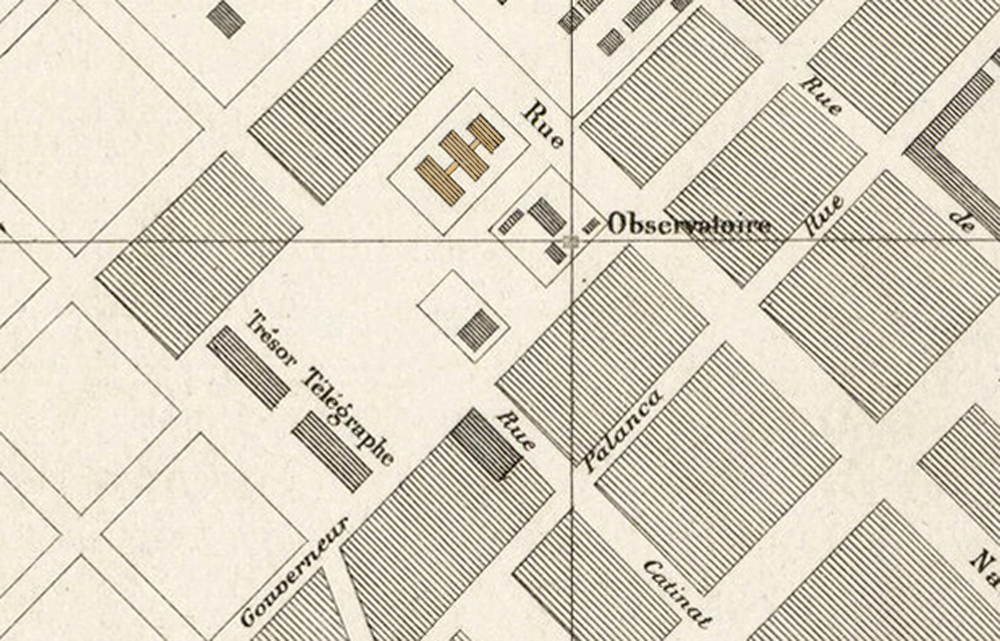
The site of the school was initially occupied by the first governor’s palace, depicted here on an 1864 map
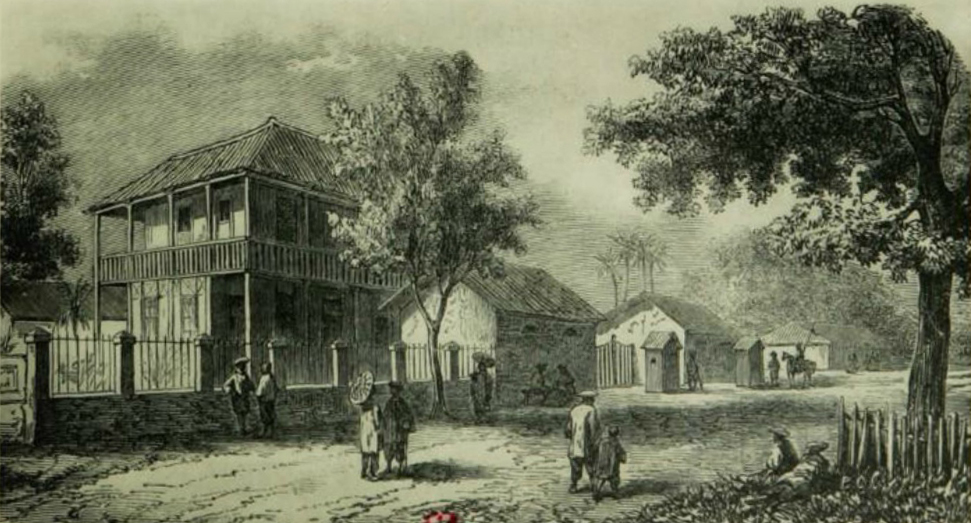
A drawing of the first governor’s palace from Iconographie historique de l’Indochine française (1931)
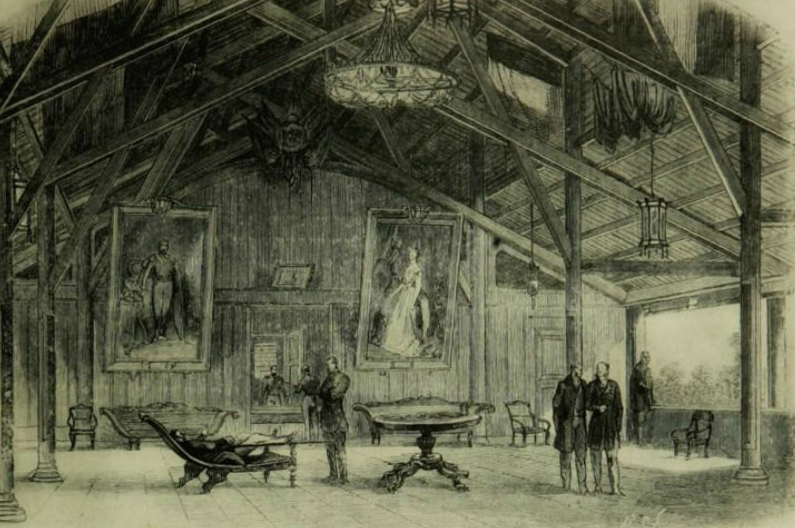
A drawing of the interior of the first governor’s palace from Iconographie historique de l’Indochine française (1931)
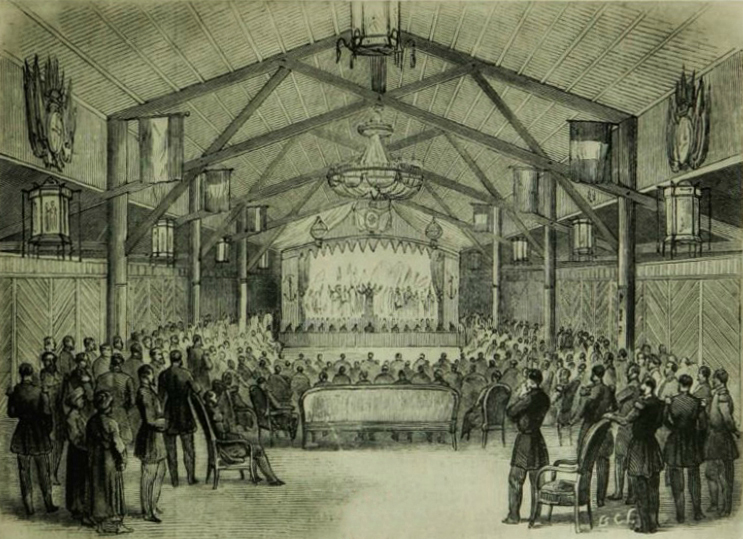
A drawing of the salle de spectacles in the first governor’s palace from Iconographie historique de l’Indochine française (1931)
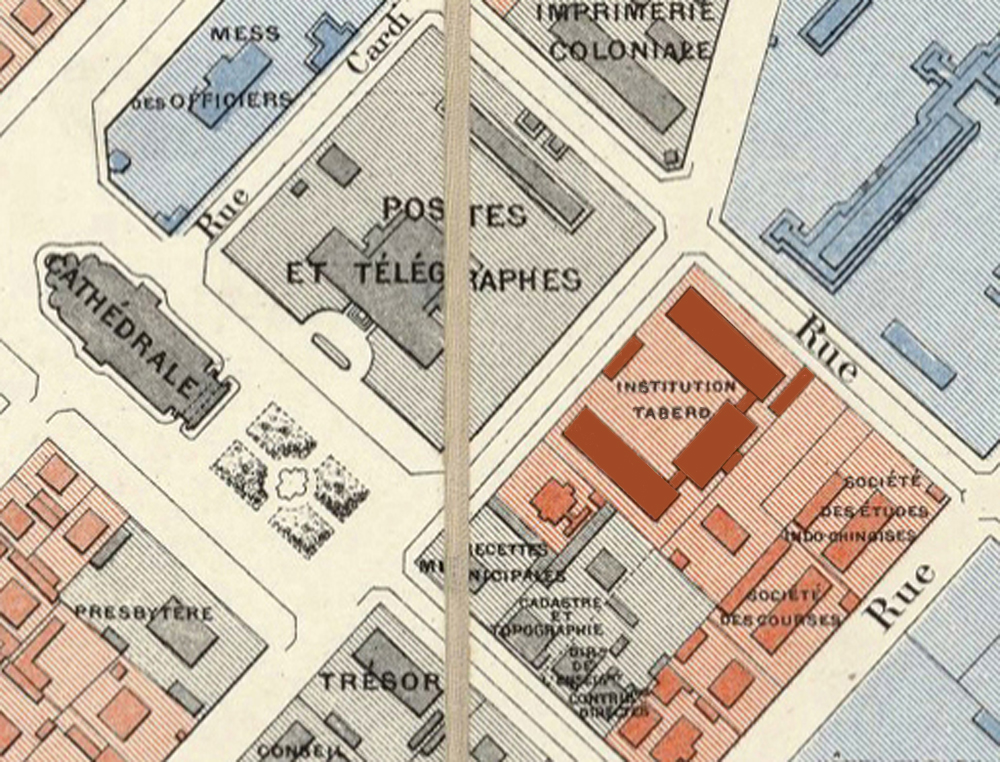
We know that the current school buildings were in existence by 1890, since they are clearly identifiable on a map which dates from that year
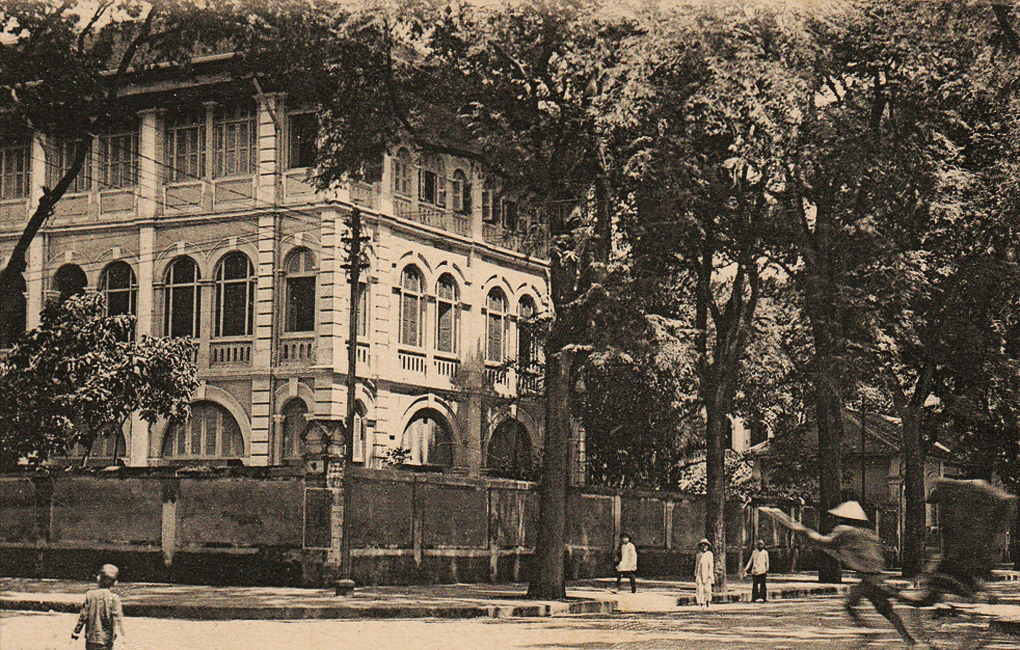
An exterior view of the Institution Taberd during the colonial era
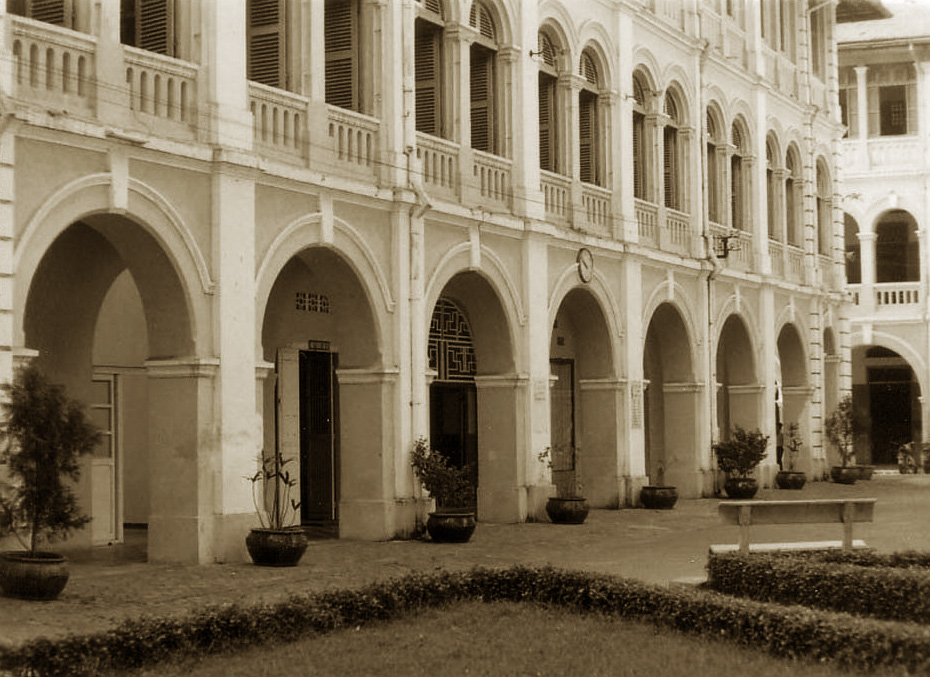
The courtyard of the Institution Taberd during the colonial era

The main entrance of the Trần Đại Nghĩa Specialist High School today

A statueless plinth in the courtyard of the Trần Đại Nghĩa Specialist High School
Tim Doling is the author of the guidebook Exploring Saigon-Chợ Lớn – Vanishing heritage of Hồ Chí Minh City (Nhà Xuất Bản Thế Giới, Hà Nội, 2019)
A full index of all Tim’s blog articles since November 2013 is now available here.
Join the Facebook group pages Saigon-Chợ Lớn Then & Now to see historic photographs juxtaposed with new ones taken in the same locations, and Đài Quan sát Di sản Sài Gòn – Saigon Heritage Observatory for up-to-date information on conservation issues in Saigon and Chợ Lớn.

